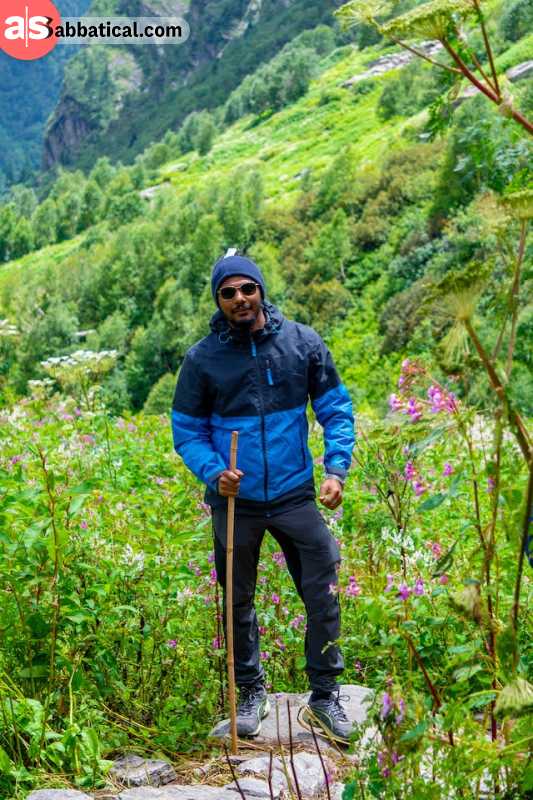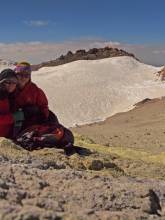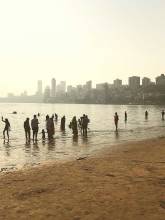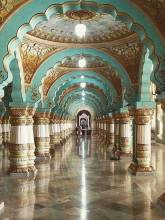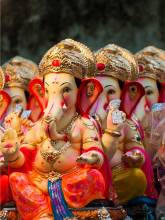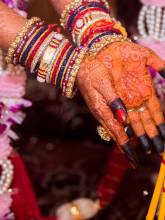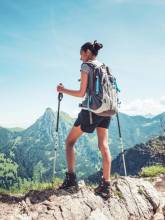Exploring Nature's Canvas: Valley of Flowers Trekking Adventure
Nestled in the lap of the mighty Himalayas, the Valley of Flowers trek in Uttarakhand, India , is a place that seems like it's been painted by the brushstrokes of the divine. This UNESCO World Heritage Site is a testament to the sheer diversity and beauty that Mother Nature has to offer. The Valley of Flowers trekking adventure is a journey that takes you through meadows adorned with a riot of colours, rare and exotic flora, and breathtaking landscapes.
, is a place that seems like it's been painted by the brushstrokes of the divine. This UNESCO World Heritage Site is a testament to the sheer diversity and beauty that Mother Nature has to offer. The Valley of Flowers trekking adventure is a journey that takes you through meadows adorned with a riot of colours, rare and exotic flora, and breathtaking landscapes.
A trek to the Valley of Flowers is not just a physical journey; it's a spiritual awakening, a rendezvous with the sublime forces of nature. It's a chance to witness the Earth in its purest, most unadulterated form. This trek leaves an indelible mark on the soul, a memory that lingers long after the last petal has fallen. So, for those seeking an adventure that transcends the ordinary, the Valley of Flowers beckons, ready to unveil its breathtaking canvas.
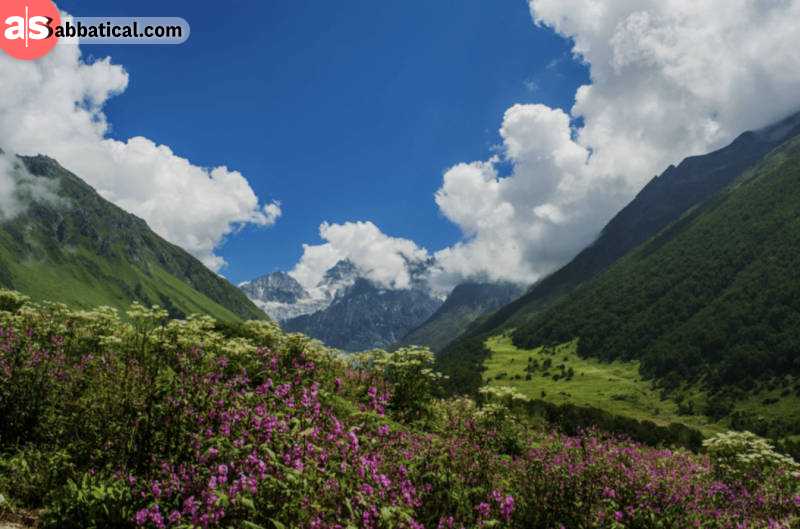
The Enchanting Canvas
The Valley of Flowers is a sprawling expanse of approximately 87.50 sq. km. Its elevation ranges from 3,250 metres to 6,750 metres, providing an incredibly diverse range of ecosystems. The trek starts from Govindghat and meanders through a terrain that is equal parts challenging and rewarding.
Floral Symphony
The heart of this experience lies in its remarkable flora. The valley boasts an incredible array of alpine flowers, some of which are endemic to the region. The monsoon season, from June to September, is the prime time to witness this floral spectacle, when the valley comes alive in an explosion of colours. It's not uncommon to see carpets of blue primulas, yellow poppies, and pink saxifrages, among others, stretching as far as the eye can see.
Fauna Wonders
The Valley of Flowers is not just about flowers; it's also home to a diverse range of wildlife. Rare species like the snow leopard, blue sheep, and brown bear call this region home. For birdwatchers, the valley is a paradise with birds like the Himalayan Monal, Himalayan Griffon, and Snow Partridge making appearances.
Spiritual Significance
Apart from its natural grandeur, the Valley of Flowers holds immense spiritual significance. It is believed to be the place where Lord Hanuman collected the Sanjeevani herb to revive Lord Lakshmana in the epic Ramayana. The locals, predominantly from the Bhotiya and Garhwali communities, hold the valley in reverence and consider it a sacred site.
Trekking Experience
The trek itself is a journey of self-discovery. It encompasses a diverse range of terrains, from dense forests to rocky paths, river crossings, and lush meadows. It offers a challenge to both seasoned trekkers and novices, making it an ideal choice for adventurers of varying levels of experience.
Conservation and Sustainability
Preserving the fragile ecosystem here is of paramount importance. The delicate balance of flora and fauna needs to be protected from the pressures of tourism. Responsible trekking, waste management, and respecting the local culture and traditions are vital steps towards ensuring the longevity of this natural wonder.
Best Time to Visit
The Valley of Flowers is accessible only during a certain period each year. The ideal time for the trek is from mid-June to September when the valley is in full bloom.
Accommodation
The base for the Valley of Flowers trek is usually the small town of Govindghat. From there, trekkers can find a variety of accommodation options ranging from guesthouses to campsites.
Accessibility
The trek starts from Govindghat, which is well-connected by road. It's approximately a 10-hour drive from the nearest railway station, Rishikesh. The nearest airport is Jolly Grant Airport, which is located in Dehradun.
Trekking Permits
To visit the Valley of Flowers, trekkers need to obtain permits from the Forest Department. These permits are available in Joshimath, the nearest town to Govindghat.
Hemkund Sahib
Many trekkers combine this trek with a visit to Hemkund Sahib, a Sikh pilgrimage site, which is located nearby. Hemkund Sahib is situated at an altitude of 4,329 metres and offers breathtaking views of the surrounding mountains.
Trek Difficulty
The Valley of Flowers trek is considered moderate in difficulty. It involves trekking through diverse terrains and requires a reasonable level of fitness. Altitude sickness can be a concern, so acclimatisation is important.
Local Cuisine
The local cuisine of Uttarakhand offers a taste of the region's culture. Dishes like Aloo Ke Gutke (potato curry), Bhatt ki Churkani (black bean curry), and Kafuli (a spinach-based dish) are popular among trekkers.
Guided Tours
While it's possible to do the trek independently, many trekkers opt for guided tours. Experienced guides are familiar with the terrain, weather conditions, and can provide valuable insights about the flora and fauna.
Camping Experience
Camping in the Valley of Flowers is a unique experience. Trekkers get the chance to spend their nights surrounded by the serene beauty of the Himalayas.
Leave No Trace
It's crucial to follow the principles of Leave No Trace while trekking in the Valley of Flowers. This includes disposing of waste responsibly, respecting wildlife, and minimising one's impact on the environment.
Altitude Gains
The trek to the Valley of Flowers involves a significant altitude gain. Trekkers start at an altitude of around 3,250 metres (10,660 feet) and reach a maximum altitude of approximately 3,600 metres (11,811 feet). Proper acclimatisation and gradual ascent are crucial to avoid altitude sickness.
Weather Considerations
The weather in the Himalayas can be unpredictable. Even during the summer months, temperatures can drop significantly, especially at night. Trekkers should be prepared for a wide range of temperatures and weather conditions.
Flower Species
The Valley of Flowers is home to a remarkable variety of flower species. Some of the notable ones include Brahma Kamal, Blue Poppy, Cobra Lily, and Himalayan Blue Poppy, which are considered rare and endemic to the region.
Photography Opportunities
The Valley of Flowers is a paradise for photography enthusiasts. The vivid colours of the flowers against the backdrop of the Himalayan peaks offer breathtaking photo opportunities. It's recommended to carry a good quality camera to capture the beauty of the valley.
Medical Facilities
While trekking in the Valley of Flowers, it's important to be aware of the limited medical facilities available. There are basic healthcare centres in Govindghat, but for more serious medical emergencies, one may need to travel to Joshimath or further.
Pack Light and Smart
It's crucial to pack efficiently for the trek. Lightweight and moisture-wicking clothing, sturdy trekking shoes, a good quality backpack, a first-aid kit, and essential personal items are some of the essentials.
Local Culture and Traditions
The communities living in the vicinity of the Valley of Flowers have their own unique culture and traditions. Interacting with the locals and learning about their way of life can add a rich cultural dimension to the trekking experience.
Other Nearby Attractions
Apart from the Valley of Flowers and Hemkund Sahib, there are other attractions in the region worth exploring. These include Badrinath Temple, the holy town of Joshimath, and the scenic Auli, known for its winter sports.
Environmental Conservation Efforts
Various organisations and initiatives are actively involved in preserving the ecological balance of the Valley of Flowers. Supporting these efforts, such as participating in clean-up drives or contributing to conservation projects, is a positive way to give back to the environment.
Personal Fitness and Training
Preparing physically for the trek is important. Engaging in regular cardiovascular exercises, strength training, and endurance-building activities can significantly enhance one's trekking experience.
Safety Measures
It's important to be well-prepared for any unforeseen circumstances. Carrying essential safety equipment like a whistle, flashlight, and a basic first-aid kit can be invaluable in case of emergencies.
Perennial Streams and Water Sources
The trek to the Valley of Flowers is dotted with numerous streams and water sources. Trekkers can refill their water bottles from these natural springs, but it's advisable to carry water purification tablets or a portable water filter.
Duration of the Trek
The Valley of Flowers trek typically spans over 5 to 6 days, including the acclimatisation day at Ghangaria. This allows trekkers to explore the valley at a comfortable pace and enjoy its beauty to the fullest.
Ponies and Porters
For those who prefer not to carry heavy backpacks, ponies and porters are available for hire in Govindghat. This service can be particularly helpful for individuals who want to focus solely on the trekking experience.
Birdwatching Opportunities
Besides the stunning flora, the Valley of Flowers is a haven for birdwatchers. Keep an eye out for Himalayan bird species like the Blue-fronted Redstart, Fire-fronted Serin, and the Himalayan White-browed Rosefinch.
Monsoon Considerations
The Valley of Flowers experiences heavy rainfall during the monsoon season. Trekkers should be prepared for wet and slippery trails. Rain gear, waterproof backpack covers, and sturdy, waterproof footwear are essential.
Cultural Festivals
If your trek coincides with local festivals, it's a unique opportunity to experience the vibrant culture of the region. The Hemkund Sahib Yatra, which usually takes place in July, is one such festival that draws devotees and visitors from far and wide.
Sunrise and Sunset Views
Ghangaria, the base camp for the Valley of Flowers trek, offers spectacular sunrise and sunset views over the surrounding mountains. Taking some time to witness these natural spectacles is a must for any visitor.
Conclusion
Some tour operators offer guided interpretive tours led by experienced naturalists. These experts provide valuable insights into the floral and faunal diversity of the region, enhancing the overall trekking experience. To protect the fragile ecosystem of the Valley of Flowers, it's imperative to avoid using single-use plastics. Trekkers should carry reusable water bottles and containers and ensure they dispose of waste responsibly.


